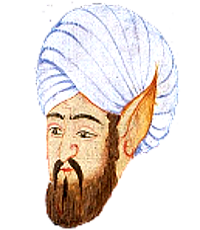Kitab Rujar and the Emirate of Sicily
The Arabs did not only invade Spain but also Italy, or at least the southern Italian island of Sicily. In 831 CE, Sicily was wrestled from the Byzantines and an emirate established here, with Palermo as its capital. It lasted, albeit in increasingly weakened form, until 1072. Much as in Spain, the Arab occupation transformed a provincial backwater into a flourishing economic and cultural center. A land-reform reduced the power of the landed estates and increased productivity of agriculture. The irrigation systems were improved and the Arabs introduced new crops such as oranges, lemons, pistachios and sugarcane. In the eleventh-century, Palermo had a population of 350,000, making it the second largest city in Europe after Córdoba.
In 1091, the Normans captured the island. The Normans were Vikings from France who started out as mercenaries working for the Byzantine kings of southern Italy, but who before long began making war on their own behalf. Yet in sharp contrast to the situation in Spain after the Reconquista, the Normans did not try to destroy Arab Sicily. On the contrary, Arab scholars and artists were given new commissions and Arab bureaucrats continued to be employed by their government. Visitors were astonished to learn that even the king’s own chef – a key position for anyone interested in poisoning his majesty – was an Arab. The result was a blend of Arabic, Byzantine and Norman influences which still is on display in some of Palermo’s churches.
The court of the Norman king Roger II, 1130-1154 CE, was particularly splendid. Although its official language was French, the king spoke Arabic fluently, and the administration communicated with its subjects in Latin, Greek, Arabic and Hebrew. People were encouraged to convert to Christianity, but Islam was tolerated. The geographer, Muhammad al-Idrisi, was one of the scholars employed at Roger’s court. In 1154, after 15 years of research, he produced the Kitab Rujar, the Tabula Rogeriana, or the “Book of Roger,” a description and a map of the world. The original copy of Kitab Rujar was lost in the 1160s and the Norman court was destroyed soon after that. Next Sicily came under the power of the Catholic church. Persecution of Arabs began in the 1240s and Byzantine influences were wiped out too. By the 1330s, Palermo was once again a provincial backwater – now with only 50,000 inhabitants.
